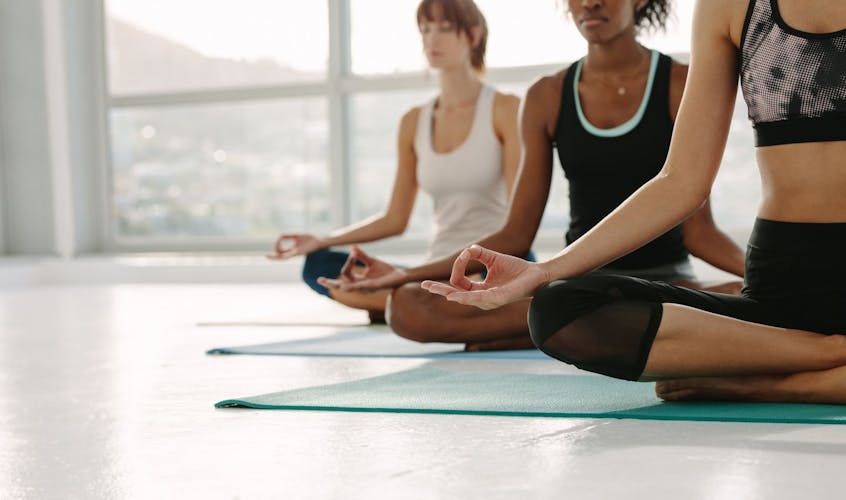As a part of Therapydia’s Pelvic Floor Dysfunction Treatment, our physical therapists help patients to eliminate symptoms of pain and discomfort by strengthening weakened muscles and relaxing muscles that may be too tight. Along with manual therapy techniques, stretching, and patient education, custom exercises are prescribed to patients in order to increase hip and core strength to provide the necessary tools to eliminate symptoms of pelvic floor dysfunction. Below are a few example exercises utilized in pelvic health physical therapy.
Bridge with Hip Adduction
This exercise increases core activation to help strengthen and stabilize your muscles.
• With your knees bent and your feet on a flat surface, squeeze the Pilates ring using your inner thigh muscles so that your knees, ankles and hips are all in one line.
• Hold this position as you lift your hips up, squeezing through the glute muscles.
• Maintain a tight core throughout to avoid any arching of the back and to ensure proper glute activation.
• Hold for a few seconds at the top and return to the starting position.
Side-lying Hip Abduction
Hip abductor muscles are important muscles that not only contribute to our ability to stand, walk and rotate our leg with ease, but also ensure that the pelvis is stable and functioning properly.
• Lie on your side with your bottom knee bent for stability.
• Roll the top hip forward and contract the lower abs to prevent any arching of the low spine.
• Lift the top leg straight up with the toe pointed forward and squeeze the leg up and slightly back.
• You should feel this exercise in the posterior glute and not in the front or the side of the hip.
Clamshells
Clamshells help to stabilize the pelvis by strengthening the surrounding musculature. Strong hips are important when it comes to the function of your pelvic floor and the prevention of pelvic pain and incontinence.
• Start on your side in a fetal position. Keep the top hip rolled forward and the heels together as you lift the top knee up using your glute muscles. This exercise should be felt in the back of the hip, not in the front, side of inner thigh.
• Make sure that you are not rolling the top hip back as you are lifting your knee.
• Keep the core engaged throughout the entire movement.
90/90 Heel Taps
90/90 heel taps engage the abdominal muscles to promote pelvic stability.
• Start on your back, contract the low abs and lift both legs up to 90 degrees of hip and knee flexion without letting the lower spine come off the table.
• Squeeze the belly button toward the spine and keep the pelvis stable as you tape one heel to the table and bring it back up.
• Alternate legs and make sure that you are not arching through the lower spine.
• Perform this exercise to fatigue.
If you experience any pain with these exercises, stop immediately and contact a Therapydia physical therapist.

